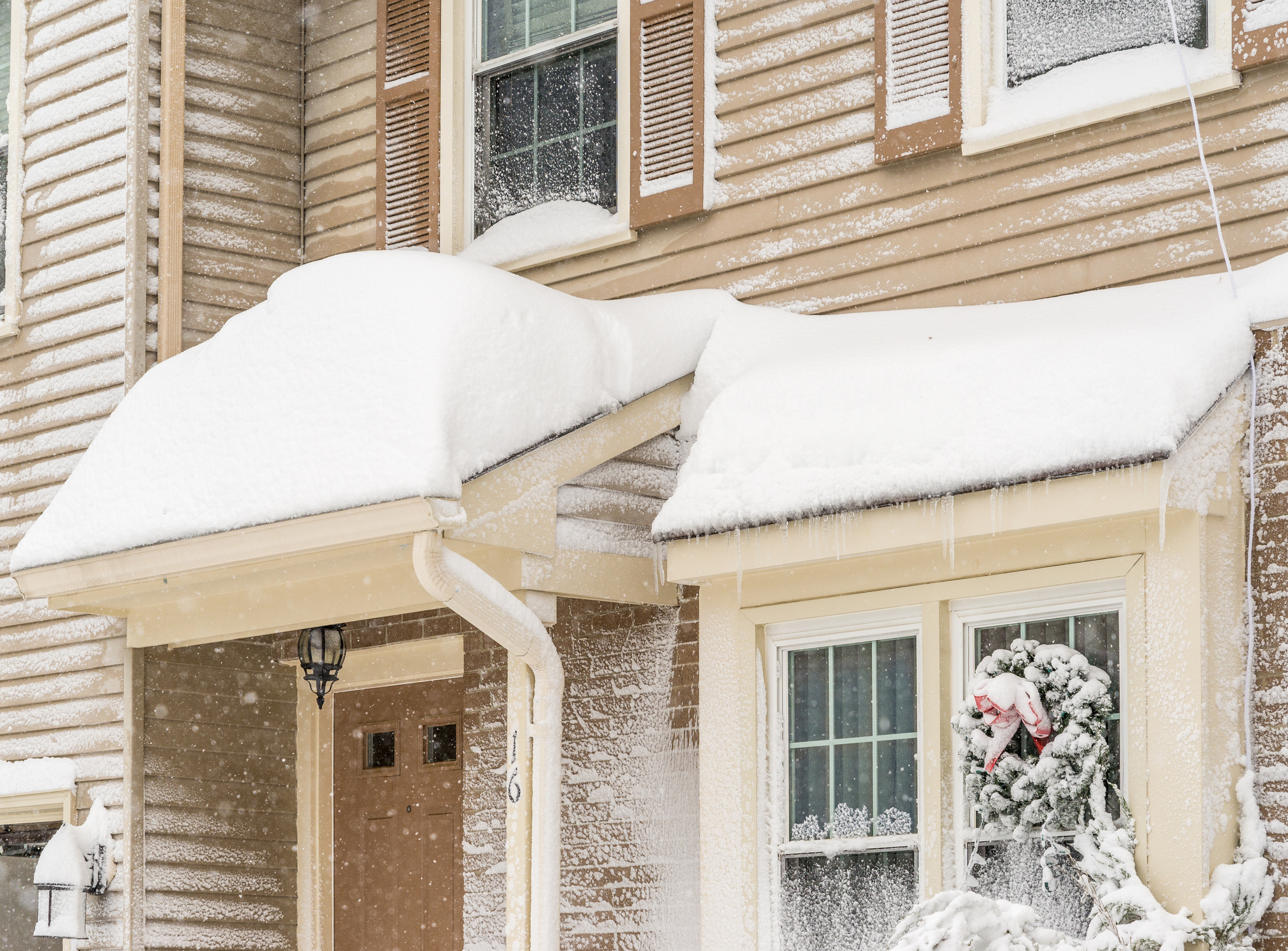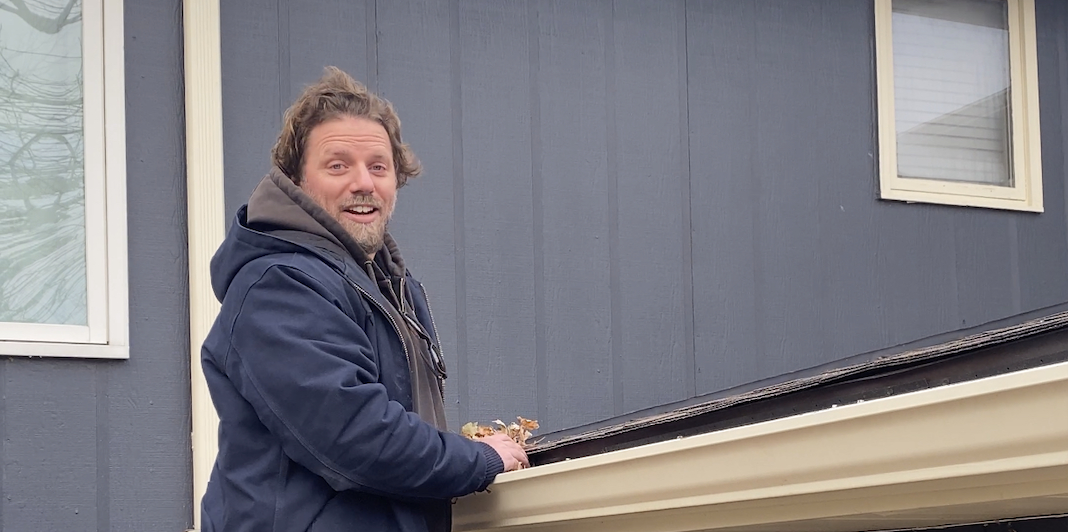The short answer: It depends on what caused the damage and the type of damage. Each policy can be different. Most standard homeowners insurance policies cover damage caused directly by winter elements or storms.
Types of roof damage that could occur in winter
Many of the following types of damage occur from a cycle of freezing and thawing on your roof. Unlike frozen pipes that can freeze and burst, changes in temperature cause your shingles to expand and contract, occasionally allowing water to get underneath. If this happens in several areas of your roof, it can impact the integrity of your roof. If there are already problems, this cycle of freezing and thawing can make existing problems worse.
Wind damage and winter storms. High winds could blow shingles up or off of your roof, allowing water and more to get under your shingles.
Ice dams. This is one of the biggest issues Hopkins sees during the winter. Ice dams occur when the middle of your roof is warmer (typically from the heat from your house) than the eaves of your roof where there is no heat. So melting snow in the middle part flows to the eaves and freezes. A ridge can form from the ice repeatedly freezing in that area. As the ice grows, it can form a ridge, holding back water like a dam. This can continue to grow, eventually creeping up under the shingles. Water that goes under shingles will cause leaks and water damage. If it freezes, the ice can damage the shingles from the underside.
Tip to prepare your roof for winter:
Ice dams are more likely to occur if the roof is not insulated well and/or gutters and downspouts are backed up with ice, snow, or other debris. To help prevent ice dams, clean leaves out of your gutters each fall so they are prepped for winter.
Fallen trees and branches. Timber! Branches or trees that fall on your roof, caused by high winds or heavy snow, can cause major damage. From simply scratching the shingles to creating holes, this is especially prevalent in neighborhoods with large, old trees.
Heavy snow. Though rare, heavy snow on your roof can cause it to collapse. This depends a lot on the structure of your home. If snow builds up on a roof that is structurally unsound, or if the roof is not strong enough to hold heavy weight for an extended period of time, it is possible the roof can collapse or cave, causing significant damage to the home and damage to your personal belongings.
This occurs when snow that is built up becomes very heavy and exceeds your roof’s weight limit. Wet snow and ice are especially heavy. Roofs that are older or damaged are at greater risk.
To help ensure this does not happen, building codes in areas that expect to have more snow will be different to prevent any issues with collapsing or caving in.
What insurance may cover
With the different types of roof damage that may occur in the winter, it can be confusing to know which ones are covered by insurance. Again, most insurance policies cover roof damage that occurs directly from winter elements and weather, but it depends from policy to policy and situation to situation.
Typically, if the damage is at the fault of the storm, it will get covered.
Examples
- Roof collapse or weight of snow causes sagging or cracking
- Ice dams damage the shingles and cause leaks inside the home
- Trees or branches fall on your roof and damage shingles
- Wind damage from blizzards or other winter storms damage shingles
- Icicles falling from a higher section of your roof to a lower section (injuries to people could also be covered, so double-check with your provider)
What insurance will not cover
If there is any sign of negligence or damage that could be the homeowner’s fault, the damage may not be covered.
Examples
- Gutters full of debris, causing water to get backed up on the roof, eventually freezing and causing damage to the gutters and bottom shingles
- Damage caused by trying to break up ice on your roof with a hammer or ax (let it melt instead)
- Trees or branches falling that were already at risk of falling
- Not addressing issues that have been happening with the roof for a while, eventually being made worse with ice damage
Every policy and situation is different. Ask your insurance company or read your policy to have a better understanding of what is covered by your homeowners insurance in terms of your dwelling coverage.
Not sure if you have damage?
Take the first step in protecting your home—call a trusted roofing contractor like Hopkins Roofing to inspect your roof. We can tell you if there is winter damage present and if you should file a claim. We are specifically trained to notice this kind of damage and can provide solutions.




